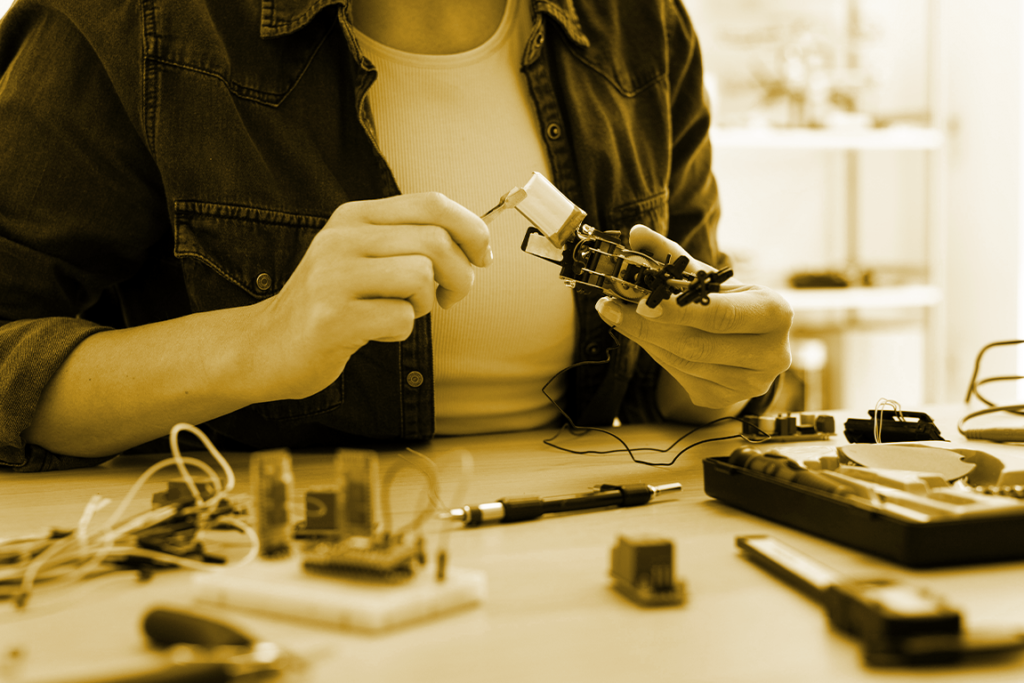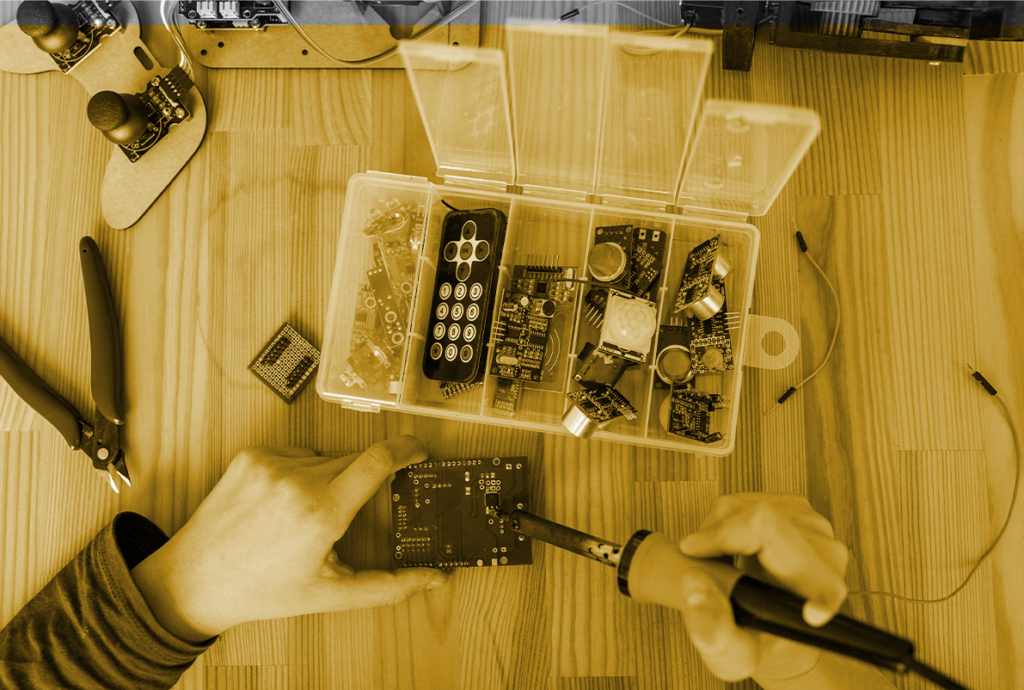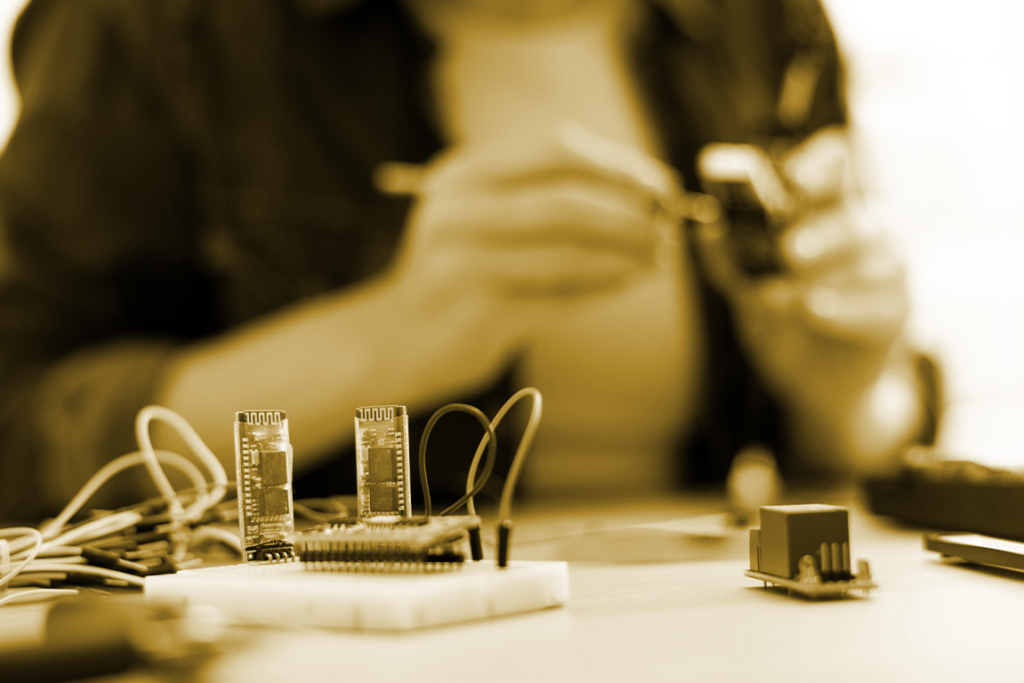Beginner Course - Level I


About Course
This course is a great place to start learning about robotics, computer vision and artificial intelligence in the PRANITI Lab as it gives students an introduction to learning engineering. Along the way, you will be introduced to many of the key resources and materials Shaikshya Kala offers.
Each week gives guidance for what teachers can do before, during, and after class in order to learn the basics of teaching building with the curricular resources. The after class suggestions can be used as discussion prompts, journal entries, assessments or classroom documentation.
16 Week Scope and Sequence
Introduce your students to Robotics, Computer Vision, and Artificial Intelligence. Give students hands-on experience with a simple build, help them get to know the components and experiment with the running of the different kits.
Introduce students to learn about and demonstrate workshop safety, as well as develop rules for conduct and tool use in the lab. Introduce students to collaboration dynamics, its importance in project scenarios and tools required for problem solving.
Continue getting to know the robots in the lab and practice spatial reasoning.
Students will learn design thinking. They will use the design process to brainstorm, plan, and implement a robot design. Help walk students through creating the basic pieces of a robot to familiarize them with the various parts and processes.
Introduce the design process with a short activity, and then the students will go through the first three steps of designing their robot: identifying the problem/requirements, brainstorming, and planning.
Introduce the students to coding and students will begin building and programming the robot designed in the previous units. They will implement the rest of the design process (prototype, test, redesign), and through this process will learn about working with hardware, electronics, and programming.
Introduce students to techniques in programming that help their robots achieve various outcomes and study its behaviors.
Introduce students to machine vision and how robots need to have a set of operations to operate effectively: sense, perceive, plan, act.
Students learn to implement a vision-based system that provides navigation abilities, based on color, objects, and shapes.
Students explore different camera systems, like the LIDAR, SONAR, ultrasonic and thermal cameras and setups to better utilize their available resources to accomplish complex objectives.
Introduce students to learn about the meaning of “intelligence” and learn about the different ways in which AI is used in the real world with the help with different tools.
Help students get a glimpse into the complex problems that begin to make machines look very intelligent, learn about deepfakes and that AI can generate material. Students will use generative AI tools to create their own works of art and discuss the pros and cons of the impact it has on society.
Help students synthesize information and understand that complex systems have many layers of controls and feedback loops to provide information. Students use this knowledge to improve the robot and its understanding of the world.
Students will complete a process to reflect on and evaluate their accomplishments. They will identify a clear, demonstrable goal for improvement on one aspect of robot or team performance and develop a plan to execute and test the improvement for impact.
Help students use their creativity and critical thinking to prototype and improve the mechanism design and use the engineering design process to understand the details of what will be needed from an algorithm standpoint to add functionality to the robot.
Students present their work and assess their peers which introduces different approaches to thinking. Students learn how to improve communication skills by presenting and demonstrating their knowledge to others.
Help students who need a little push to finish their course program.

PROMOTIONAL
OFFER!
BASIC COURSE
Now Available at
60,000/-
45,000/-
Limited Period Offer!
Material Includes
- Raspberry Pi
- Nvidia Jetson Nano
- Robot and Drone Kit
- Pixhawk Flight Controllers
- Various Sensor Camera Systems
- Testing & Measuring Systems
- 3D Printer
- Bring computer, provided if needed in-class.
- Reference Notes & Books
Benefits
- Maximum teacher-student ratio of 1:20
- Twice a week office hours, two 1-hr sessions per week for clarifications & catching up
- Grading Rubrics
- Certificate of Completion
Prerequisites
- No prior math or science skills required
- No coding experience required
- Curiosity and excitement for new information

